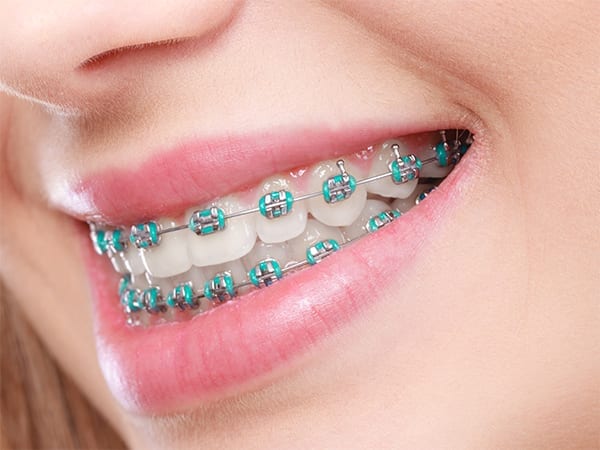Pain and discomfort from TMJ can be very bad, making it hard for many people to eat, talk, and sleep well.
The temporomandibular joint, or TMJ, connects the jawbone to the brain in a complicated way that lets the mouth open and close. When this joint is out of place or under too much stress, it can cause TMJ problems like pain, stiffness, clicking sounds, and trouble moving the jaw.
People who have TMJ pain do have a way out, though: “Orthodontic surgery.”
Even though the main goal of orthodontics is to straighten teeth, it also addresses the underlying reasons for TMJ problems, such as misplaced teeth, an incorrect bite, or jaw problems. By moving the teeth and lining up the jaws correctly, orthodontic treatment can lessen TMJ symptoms and get the jaw to work normally again.
This blog post will talk about how orthodontic treatment can help people with TMJ pain get their comfort, function, and mouth health back.
Let’s get started!
Recognizing TMJ Pain and Discomfort
The temporomandibular joint (TMJ) is an important joint that connects the jawbone to the skull and allows the jaw to move smoothly during activities such as talking, eating, and chewing. Individuals may feel TMJ pain and discomfort if problems emerge within this joint.
The Role of Orthodontic Treatment in TMJ Relief
Orthodontic treatment is critical in reducing TMJ pain and discomfort by addressing the underlying reasons for the disease.
Misaligned teeth are a primary contributor to TMJ issues. When teeth are not properly aligned, it can cause an unbalanced bite, putting excessive tension on the TMJ.
Orthodontic therapies, such as braces or aligners, can efficiently address tooth misalignment by realigning the teeth and jaws. This realignment helps to evenly distribute the forces of biting and chewing, decreasing TMJ strain and pain.
Specific Orthodontic Techniques for TMJ Relief
Here are some of the most prevalent orthodontic methods for TMJ relief:
Splints or orthotic devices
Orthodontists may advise the use of splints or orthotic devices to relieve TMJ symptoms. These custom-made items are intended to fit over the teeth and provide jaw support. Splints assist in repositioning the jaw in a more relaxed position, easing tension and minimizing strain on the TMJ.
Orthodontic adjustment
Orthodontists may use a variety of treatments to realign the teeth and jaws, thereby enhancing TMJ function. This can be accomplished through tooth movement, jaw realignment, or a combination of the two.
Tooth extraction or expansion
To treat TMJ symptoms, tooth extraction or expansion may be required. Specific tooth extractions can generate more space in the mouth, allowing the remaining teeth to align properly and lowering TMJ tension.
Orthodontic expansion, on the other hand, widens the dental arch, providing more space for teeth to align appropriately and fostering a more balanced bite.
Bite reclaiming
Bite reclamation is a procedure for restoring the vertical dimension of teeth that has been compromised by wear, grinding, or tooth loss.
Orthodontists can restore appropriate jaw alignment and relieve TMJ symptoms by raising the height of the teeth.
The Advantages of Orthodontic Treatment for TMJ Pain
Here are some of the most important advantages of orthodontic treatment for TMJ pain:
TMJ Pain and Discomfort Reduction
Jaw functionality has been improved.
Muscle Tension Has Been Reduced
Long-Term Oral Health Advantages
Improved Quality of Life
Consultation and Treatment Process
Finding relief from TMJ pain and discomfort requires evaluation and treatment with an orthodontist in Capitol Hill.
It is critical to visit with a trained and experienced orthodontist in Capitol Hill, VA, who specializes in TMJ therapy when seeking orthodontic assistance for TMJ-related disorders.
Here’s a rundown of the consultation and treatment procedures:
Initial consultation
The first step is to make an appointment with an orthodontist in Capitol Hill, VA, who specializes in TMJ therapy.
The orthodontist will analyze your unique TMJ condition, extensively inspect your teeth, jaws, and bite, and discuss your symptoms and medical history during this appointment. This session gives you the opportunity to express your concerns and ask any questions you may have.
Diagnostic examinations
The orthodontist may propose additional diagnostic testing, such as X-rays, 3D imaging, or tooth impressions, to accurately analyze your TMJ condition.
These tests provide important information about the alignment of your teeth and jaws, which assists the orthodontist in developing an effective treatment plan.
Treatment preparation
Based on the evaluation and diagnostic results, the orthodontist will develop a customized treatment plan tailored to your individual TMJ condition.
The treatment plan will detail the appropriate orthodontic procedures, such as braces, aligners, splints, or other orthotic devices, that will be used to relieve your TMJ pain and discomfort.
Treatment initiation
The orthodontist will walk you through the treatment commencement procedure once the treatment plan has been finalized. This could include brace installation or the fitting of aligners or orthotic devices.
The orthodontist will make certain that you understand the correct care and maintenance of the appliances, as well as any lifestyle changes that may be required throughout the treatment period.
Ongoing monitoring and adjustments
Throughout your orthodontic treatment with the orthodontist in Capitol Hill, VA, regular monitoring sessions will be scheduled to track your progress and make any required adjustments. These consultations enable the orthodontist to confirm that the treatment is progressing as expected and to address any concerns or discomfort you may be experiencing.
Read more: How to Turn on a Gas Hot Water System: A Step-by-Step
















